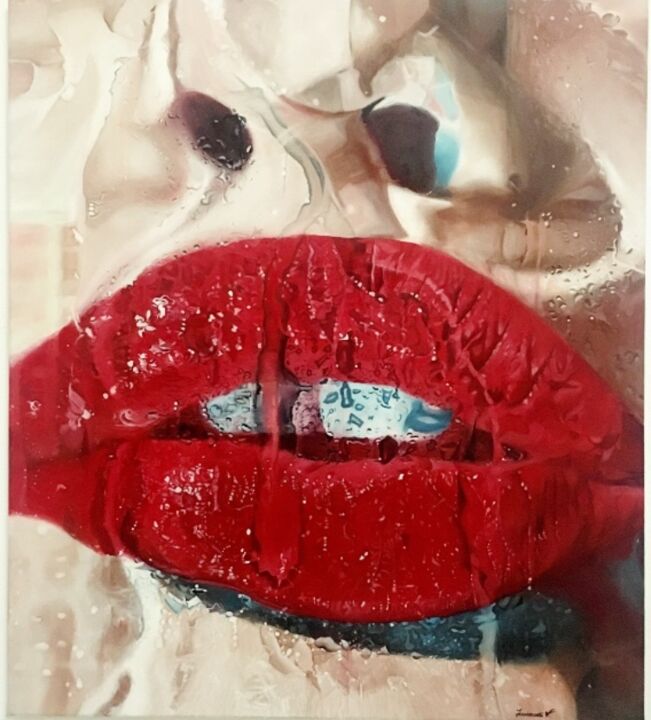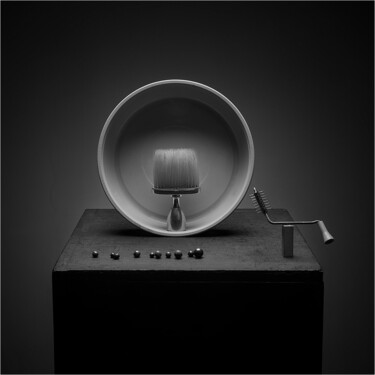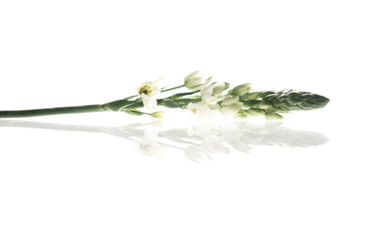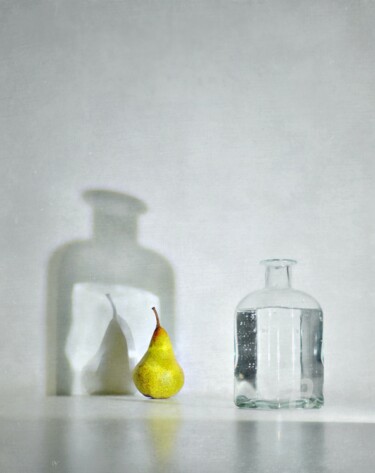 Jrmuroart, Nostalgia, 2019. Oil on wood, 65 x 81 cm.
Jrmuroart, Nostalgia, 2019. Oil on wood, 65 x 81 cm.
What is Hyperrealism?
Hyperrealism is a relatively young type of artistic research, born mainly with the aim of creating illusions, with the purpose of improving and enhancing the reality that surrounds us. In fact, the work of the artists of this genre exceeds the qualities of pure photographic realism, highlighting vivid, intense and often overlooked details of our daily reality. In pursuit of this goal, the exponents of Hyperrealism play with the intensity of color, lighting, contrast and sharpness, generating more vivid representations of what is simply noticeable to the naked eye. What has just been stated is the main feature that separates this genre from its more naturalistic predecessor, photorealism. As for the techniques favored by the hyperrealists, they are drawing, painting and sculpture, which are enriched by the use of technologies, such as digital illustration or the alteration of images transferred to canvas. In conclusion, these tools are intended to provide an effective means in order to explore how people interact with themselves, with others and with objects, or the contexts of everyday life, immortalizing the psychological functioning, internal, external or aesthetic, of the human mind and body.
 Maëlle Valantin, Burger, 2021. Acrylic on MDF panel, 60 x 80 cm.
Maëlle Valantin, Burger, 2021. Acrylic on MDF panel, 60 x 80 cm.
 Alfredo Furiati, Lockdown, 2020. Oil on linen canvas, 40.1 x 30 cm.
Alfredo Furiati, Lockdown, 2020. Oil on linen canvas, 40.1 x 30 cm.
The Placement of Hyperrealism within Art History
The history of any artistic movement, as well as that of Hyperrealism, born in the United States around the 1960s, must be told in relation to other influential styles that preceded it and, consequently, "forged" it. In fact, the origin of this genre, although distinct in its peculiarities, prescinds from the older currents of Realism and Photorealism, with which it shares the studied rendering of reality. Precisely Realism, a movement born in France during the mid-nineteenth century, was characterized by the depiction of sharp scenes of everyday life, while Photorealism, originating in America at the end of the sixties, saw the commitment of artists who tried to produce photographs in the most realistic way possible. Unlike the latter trends, however, in Hyperrealism there is a greater search for fidelity in the rendering of reality, achieved through an unprecedented and careful attention to detail, which, in most cases, becomes the very center of the work. Nevertheless, it is worth noting that, in addition to Realism and Photorealism, Pop Art has also influenced Hyperrealism, which, in fact, often refers to industrial culture. In this context, it was fundamental the artistic investigation of the great Pop master, Andy Warhol, who, with his photographic images rich in details, discovered how technology could help to enter the particular, probing the human soul and its conscience. Finally, it was the example drawn from all these currents to generate the peculiarities of Hyperrealism, which, making extensive use of photographic techniques and mechanical reproduction of reality, generated illusionistic visions of the world, immortalized with aggressive colors and shots strongly focused on the main subjects.
 Chrisart.Aquarelle, Reflections on the counter, 2020. Watercolor on paper, 39 x 29 cm.
Chrisart.Aquarelle, Reflections on the counter, 2020. Watercolor on paper, 39 x 29 cm.
 David Shepherd, Loose lips sink ships, 2021. Oil on canvas, 127 x 107 cm.
David Shepherd, Loose lips sink ships, 2021. Oil on canvas, 127 x 107 cm.
Critical Viewpoints
Hyperrealist production is often regarded with sufficiency because, similar to photographs and digital images, it seems to offer nothing more than the mere exhibition of the creator's technical skill. In reality, however, in a world where some works that require little or no actual skill are praised as masterpieces, it seems paradoxical to define Hyperrealist investigation as "useless". In fact, why shouldn't we celebrate and appreciate something that requires a great deal of work and skill? In addition, it has often been the work of the exponents of this genre, aimed at questioning our perception of reality, to make the audience capitulate, who, in most cases, remain incredulous and open-mouthed in front of the incredible results of Hyperrealist art.
 Alisa Iamandi, Wet lips, 2019. Oil on linen canvas, 80 x 70 cm.
Alisa Iamandi, Wet lips, 2019. Oil on linen canvas, 80 x 70 cm.
Hyperrealism in Contemporary Art
The genre of Hyperrealism is still very popular today, as revealed by the work of the artists of Artmajeur, which, on occasion, also recalls the greatest classics of the movement. We find an example of this in the artistic investigation of Péter Duhaj, Yiğit Dündar and Conse Andechaga, who have created paintings aimed at highlighting vivid and intense details of our everyday reality.
 Péter Duhaj, Chocolate, 2021. Oil on canvas, 120 x 120 cm.
Péter Duhaj, Chocolate, 2021. Oil on canvas, 120 x 120 cm.
Péter Duhaj: Chocolate
The work of Duhaj, a contemporary Hungarian artist, is marked by a strong attraction to colors, shapes, moments and emotions, which are captured to perfection through the stylistic elements of Hyperrealism. In the painting Chocolate, the aforementioned artist has immortalized the intense close-up of a girl, whose face is literally covered in dripping chocolate. This subject, with a high rate of eroticism, presents undisputed affinities with the Liquid Series, created by the famous contemporary Hyperrealist Mike Dargas. It is important to highlight this analogy, since the idea of Dargas, a German artist who became famous thanks to social networks, has been quite successful even within the world of celebrities, so much so that a large clientele, including Boris Becker, Domenico Dolce and Stefano Gabbana, has purchased his pieces for prices ranging from 25,000 to 30,000 pounds. Therefore, the above theme, reproposed with great skill and originality by the artist of Artmajeur, is rightfully included in the trends of contemporary art.
 Yiğit Dündar, World is such because we are such, 2016. Oil on canvas, 160 x 140 cm.
Yiğit Dündar, World is such because we are such, 2016. Oil on canvas, 160 x 140 cm.
Yiğit Dündar: World is such because we are such
Dündar's hyperrealist painting studies, in multiple models and positions, the female body wrapped in a veil. This subject, despite its great originality of treatment, can be compared to that investigated by the well-known English hyperrealist, Robin Eley, who has made the bodies covered with transparent plastic one of his most authentic "trademarks". The intent of Eley, who generally spends about five weeks on the realization of a single painting, is to render, through the painting of wrapped bodies, the perception of isolation in the modern world. Consequently, can we assume that Dündar also wants to convey a similar message? Probably so, since the title of the painting, World is such because we are such, provides unlimited food for thought about human nature and conduct.
 Conse Andechaga, Inside, 2020. Acrylic on canvas, 146 x 114 cm.
Conse Andechaga, Inside, 2020. Acrylic on canvas, 146 x 114 cm.
Conse Andechaga: Inside
Andechaga's painting, entitled Inside, makes clear reference to the world of well-being and personal care, themes that are very much in vogue in our contemporary world. In reality, however, the message launched by the artist turns out to be even deeper, since he reveals that the work, part of the Inner City collection, alludes to the "masks" with which we "show" ourselves in society. Consequently, the intent of Inside becomes that of promoting the importance of inner beauty, which should inexorably overpower, or at least accompany, that of the exterior. Similarly, in the world of contemporary art, the popular young Ukrainian artist, Sergey Piskunov, has immortalized women intent on their beauty routines, making this highly sought-after topic.


 Olimpia Gaia Martinelli
Olimpia Gaia Martinelli























